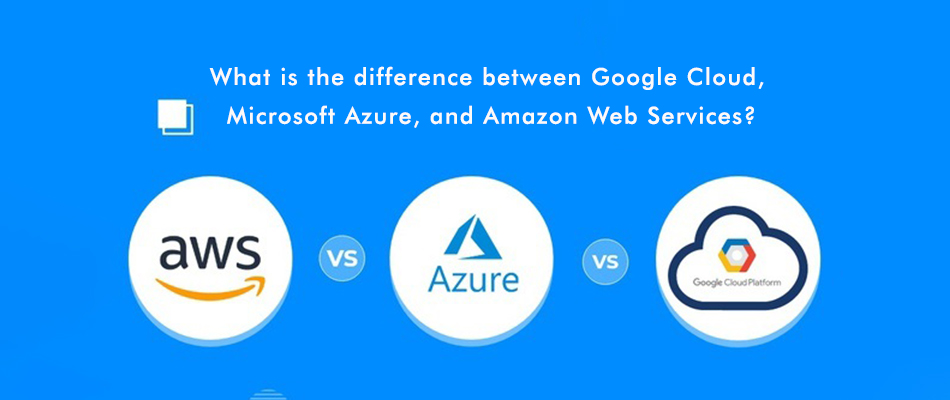With the increasing number of servers and applications being managed by DevOps professionals, the complexity of the tasks has increased. To tackle this, various configuration management tools like Ansible and Puppet have been developed. These tools have been deemed important or even essential by experts, as they play a crucial role in the DevOps model by supporting continuous integration. Configuration management helps to automate and streamline the management of IT infrastructure and applications, making it easier for DevOps teams to focus on more strategic tasks and quickly deliver applications to the market.
Introduction
Ansible is an open-source platform that provides simple yet powerful IT automation solutions. It is designed to be easy to use and requires no special coding skills. Ansible automates the deployment and configuration of applications and systems by using a simple, human-readable language and a powerful framework.
Puppet is an open-source IT automation and configuration management tool that is designed to help organizations manage and automate the deployment and configuration of applications and systems. Puppet is a client-server-based solution and requires a Puppet master server to be installed and configured, which acts as the central repository for all configurations. The Puppet clients, or nodes, connect to the Puppet master server to receive their configuration instructions.
Here, we will provide you with a comprehensive comparison of Ansible and Puppet, highlighting their key features, benefits, and differences.
This information will help organizations make an informed decision when choosing between Ansible and Puppet for their IT automation and configuration management needs. The article will also provide insights into the strengths and weaknesses of each tool, which will help organizations determine the best fit for their specific use cases and requirements.
Ansible
Ansible is a popular open-source software platform for automation and configuration management, developed by Michael DeHaan in 2012. It was designed to simplify IT operations by enabling administrators to manage multiple systems from a single control node using simple, human-readable language. Owing to its popularity, several people across the globe are opting for Ansible training courses. Though there are many options available, the best of them all when it comes to an Ansible training course is Red Hat Ansible Course.
Key Features and Benefits of Using Ansible
Ansible offers a range of features and benefits, making it a popular choice for IT automation and configuration management. It is a highly versatile automation platform that offers a range of features and benefits. Red Hat ansible certification is very popular these days, and is considered one of the best ways to learn more about it.
Some of its key features are:
- Simple syntax: Ansible uses a simple, human-readable syntax written in YAML, making it easy for even novice users to write playbooks.
- Agentless architecture: Ansible does not require the installation of any agents on target systems, reducing overhead and making it scalable.
- Multi-platform support: Ansible can manage systems running on a variety of platforms, including Linux, macOS, and Windows.
- Large community: Ansible has a large and active community, providing support and a wealth of resources, including a vast library of modules and plugins.
- Integrations: Ansible integrates with other tools and platforms, including Docker, Jenkins, and many others, enabling users to automate complex tasks and workflows.
- Advanced features: Ansible also offers advanced features for complex automation tasks, including multi-node orchestration and continuous deployment.
The benefits of Ansible include:
- Ease of use: Ansible’s simple syntax and agentless architecture make it easy to use, even for novice users.
- Scalability: Ansible can manage a large number of systems and devices, making it ideal for large-scale deployments.
- Reduced overhead: By eliminating the need to install agents, Ansible reduces the overhead associated with other automation platforms.
- Improved efficiency: Ansible automates a range of tasks, freeing up IT staff to focus on more important work. To learn more about Ansibe, enroll yourself for Red Hat Ansible Training.
- Increased reliability: By automating tasks, Ansible reduces the risk of human error, improving the reliability of IT operations.
Use Cases of Ansible
- Cloud Infrastructure Automation: Ansible can be used to automate the deployment and management of cloud-based infrastructure, such as AWS and Google Cloud.
- Application Deployment: Ansible can be used to automate the deployment and configuration of applications, reducing the time and effort required for manual deployments.
- Network Automation: Ansible can be used to automate the configuration and management of network devices, such as routers and switches, reducing the time and effort required for manual configurations.
- DevOps Automation: Ansible can be used to automate the deployment and configuration of applications as well as infrastructure and network devices, making it an ideal tool for DevOps automation
- Healthcare: Ansible can be used to automate the deployment and configuration of systems and applications in the healthcare industry, improving the efficiency and reliability of IT systems.
- Financial Services: Ansible can be used to automate the deployment and configuration of systems and applications in the financial services industry, improving the efficiency and reliability of IT systems. When it comes to learning and knowing more about Ansible, one should opt for Rhce course available.
- Telecommunications: Ansible can be used to automate the deployment and configuration of systems and applications in the telecommunications industry, improving the efficiency and reliability of IT systems.
Puppet
Puppet was first released in 2005 as an open-source tool for automating the deployment and configuration of systems and applications. It was created to simplify and streamline the process of managing large, complex IT infrastructures. Over the years, Puppet has evolved to become one of the most widely used IT automation and configuration management tools, with a large and active community of users and developers.
Puppet’s popularity is due, in part, to its ease of use and ability to automate complex IT tasks. It provides a powerful framework for automating IT operations, and it supports a wide range of platforms and technologies. Puppet is designed to be easy to learn and use, and it does not require any special coding skills. Rhce certification is becoming extremely popular these days, and several professionals are opting for it.
Key Features and Benefits of Puppet:
- Centralized Management: Puppet provides centralized management of IT infrastructure and applications, making it easier to manage large, complex environments.
- Automated Configuration Management: Puppet automates the deployment and configuration of systems and applications, reducing the time and effort required for manual configurations.
- Compliance and Auditing: Puppet provides a powerful auditing and compliance framework that helps organizations ensure that their IT infrastructure and applications are in compliance with industry regulations and standards.
- Scalability: Puppet is designed to scale to meet the needs of large, complex IT environments, making it an ideal tool for organizations with large IT infrastructures.
- Extensibility: Puppet provides a powerful extensibility framework, making it easy to extend its functionality to meet the specific needs of an organization.
- Open Source: Puppet is an open-source tool, which means that it is available to everyone for free, and organizations can modify and extend its functionality to meet their specific needs.
Use Cases and Industries Where Puppet is Commonly Used:
Puppet is used in a wide range of industries and for a variety of IT automation tasks. Some of the common use cases and industries where Puppet is used include:
- Cloud Infrastructure Automation: Puppet can be used to automate the deployment and management of cloud-based infrastructure, such as AWS and Google Cloud.
- Application Deployment: Puppet can be used to automate the deployment and configuration of applications, reducing the time and effort required for manual deployments.
- Network Automation: Puppet can be used to automate the configuration and management of network devices, such as routers and switches, reducing the time and effort required for manual configurations.
- DevOps Automation: Puppet can be used to automate the deployment and configuration of applications, as well as infrastructure and network devices, making it an ideal tool for DevOps automation.
- Healthcare: Puppet can be used to automate the deployment and configuration of systems and applications in the healthcare industry, improving the efficiency and reliability of IT systems.
- Financial Services: Puppet can be used to automate the deployment and configuration of systems and applications in the financial services industry, improving the efficiency and reliability of IT systems.
- Telecommunications: Puppet can be used to automate the deployment and configuration of systems and applications in the telecommunications industry, improving the efficiency and reliability of IT systems.
How Ansible and Puppet Are Different
When it comes to the differences between Ansible and Puppet, here are a few points that make both tools different from each other.
- Based on Architecture and Design
-
Ansible
The architecture and design of Ansible and Puppet are different. Ansible is a simple, agentless, and open-source automation tool that focuses on simplicity and ease of use. It uses a push model, where tasks are pushed to the managed nodes, and it does not require any software to be installed on the managed nodes. This makes it easy to set up and use, and it is suitable for small and medium-sized environments.
-
Puppet
On the other hand, Puppet is a client-server-based tool, where the managed nodes have a Puppet agent installed on them. The Puppet master communicates with the agents, and the agents execute the tasks. Puppet is more complex compared to Ansible, but it offers more advanced features, such as role-based access control and reporting.
2. Based on Ease of Use and Learning Curve
-
Ansible
When it comes to ease of use and the learning curve, Ansible is considered to be the easier tool to use, especially for beginners. Its simple and straightforward design makes it easy to understand and use, even for those without any previous automation experience. You can get a Redhat Ansible Certification to make a career in this tool.
-
Puppet
On the other hand, Puppet is considered to be more challenging to learn and use, especially for those without any previous automation experience. However, once mastered, Puppet can offer more advanced features and capabilities than Ansible.
3. On the Basis of Scalability and Performance
In terms of scalability and performance, both Ansible and Puppet can scale to meet the needs of large environments. However, Puppet is considered to be more scalable and performant compared to Ansible, especially in large and complex environments. This is due to its client-server architecture and advanced features. Puppet also provides more centralized management, which makes it easier to manage large and complex environments.
4. On the Basis of Community and Support
-
Ansible
When it comes to community and support, both Ansible and Puppet have large and active communities. Ansible is part of the Red Hat ecosystem and has a large open-source community that provides support, documentation, and tutorials.
- Puppet
Puppet, on the other hand, has a large commercial user base and provides enterprise-level support and features. This makes it suitable for large organizations with specific needs and requirements.
5. On the Basis of Use Cases and Industries
- Ansible
In terms of use cases and industries, Ansible is commonly used in a variety of industries, including IT, software development, and cloud computing. It is particularly suitable for automating simple and repetitive tasks, such as software deployments and configuration management. Ansible also integrates well with other tools and technologies, such as Docker, AWS, and Microsoft Azure, making it a popular choice for DevOps teams.
- Puppet
Puppet, on the other hand, is commonly used in large and complex environments, such as data centers and cloud computing environments. It is particularly suitable for automating complex and repetitive tasks, such as infrastructure as code and continuous delivery. Puppet provides a centralized management solution, which makes it easier to manage and maintain large and complex environments.
Hence, both Ansible and Puppet are popular automation tools, and each has its own strengths and weaknesses. When choosing between the two, it is essential to consider the specific requirements and constraints of the environment, such as its size, complexity, and level of support required. Ultimately, the best tool will depend on the specific needs and requirements of the organization. Whether it is ease of use, scalability, performance, or community support, each tool has its own unique benefits, and it is important to choose the right tool for the job.






